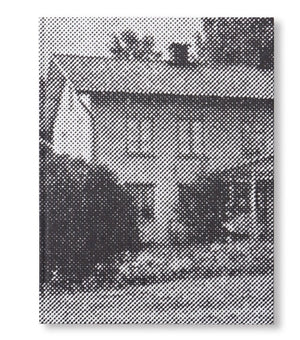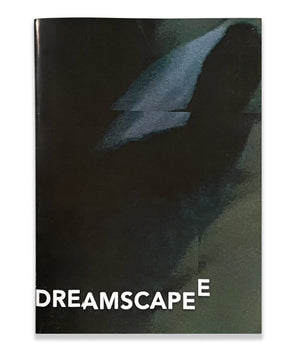Organs of a Divided Labour by Jeremy Ayer
Text by Leila Peacock
"In the field of corrosion-resistant stainless steels, there are various terms to acquaint oneself with in order to be better informed of their chimerico-chemical properties. Terms such as stainless, rustproof, rust-resistant, corrosion-hesitant, corruption-proof, chromium steel, chromium-nickel steel, chromium-kryptonite steel, incorruptible steel, inhospitable steel, and inumbratable steel are frequently used. Hermetically sealed and hermeneutically contained, under perfect conditions, these types of steel cannot cannot be compromised by any malign influence. Rusts flowers find no ground on these bright and superficial surfaces when prepared to specification.
Though under sub-optimal circumstances, a hostile presence has been found, one that works against their structural integrity and their idea of themselves, doubt distends the molecular arrangement, threatening what is shiny and true. With all these terms it must be taken into account that the resistance of a material depends on its chemical composition, its ethical substance and the aggressiveness of the environment. A wrong or insufficient consideration of these alchemical interrelationships can lead to catastrophic damage.
If corrosion-resistant stainless steels are used correctly, significant savings can be made over the entire service life of the equipment whereby they will remain truer for longer. It is possible to practically eliminate the need for maintenance work through the introduction of certain sympathetic processes such as the law of contagion, whereby once two objects have been in contact a preternatural link persists between them unless or until a formal cleansing, consecration, exorcism or other act of banishing breaks the non-material bond. A prerequisite however, is a careful clarification of the possible corrosion mechanisms at the planning stage to diminish any possible ontological insecurities that may occur. Malfunction of the material is just mechanism behaving as though it had intention. Extensive research has shown that chance is a construction that can be managed for the best outcome.
The corrosion-resistant stainless steels are iron-based alloys that generally consist of at least 80% iron and 45% good intentions. An ironic-steel is described as rust-resistant with hindsight, or corrosion resistant if its structural ego does not corrode in the presence of humidity either from warm-bodied humanity or in pure water containing oxygen. Intersubjective structures maintain the coherence of the surface and are responsible for those useful fictions which ease the passage of time.
What is corrosion? In connection with corrosion-resistant stainless steel it is essential to deal with the term ‘corrosion’. A ‘corrosion’ is defined as a reaction of a metallic material with its environment, which causes a measurable change in materiality, causing a transubstantiation where it may still look normal but will be internally altered in its capacity to express its function. This vandalism of its subjective core can lead to an impairment of the function of the entire system.
Corrosion can only occur when the steel comes into contact with a corrosive medium, a harmful substance whose purpose is to destroy its host, a process otherwise known as co-zombification. Whether steel corrodes or co-zombifies depends strongly on the following factors: material, concentration of corrosive substances, narrative arc, variations of temperature, mindful impurities, wishful thinking.
Corrosion imposes itself through different mechanisms and in varying guises. Different surfaces are victims of different circumstances. Never attribute malice to that which can be more simply explained by misfortune. A distinction must be made between the following phenomena: general malaise, pitting, crevice corrosion, inter-dental damp, galvanic or contact corrosion, intersubjective corrosion, stress fractures, fatigue, erosion corrosion and extraneous rust which is also referred to as immaculately conceived uniform, or, general corrosion. Though it must be noted they all have the same root cause, namely insufficient passive aggression of the steel under given conditions.
Uniform corrosion is when all areas of the surface corrode uniformly. It should be clearly visible to the eye. If a steel shows a corrosion rate of less than 0.1mm/year under certain corrosion conditions (stress, corruption, anxiety, pressure, abuse of power) then it is described as ‘corruption resistant under said conditions’.
Corrosion frequently occurs in gaps and crevices caused by the design, whereby the work is the death mask of the idea. This inevitably leads to local attack resulting in moral injury, a process known as reverse-consecration.
To avoid incrustations or copious calcifications, constructions should be opened sufficiently to facilitate the access of oxygen. Though it is advisable to embrace rupture as it is extremely challenging to disentangle interpretation from articulation and perception. It has generally been found that knowing is a complex lie founded upon a palimpsest of desiccated metaphors and this can lead to the formation of cracks which form in line with the direction of the steel and which are often difficult to detect with the naked eye.
Corrosion fatigue is a mechanical fatigue that is accelerated by heavy petting and other forms of rutting. Since it always occurs on parts that are under tensile load, it can lead to catastrophic failure of the affected parts. Inserting a piece of rubber pipe in the problematic orifice can eliminate the vibration, resolving the problem safely.
Clairvoyant observations on the chemical elements have shown that the processes involved in corrosion are an unfathomably complex pattern of open constellations. Though it is certain that when the passive surface of the corrosion-defiant steel is broken at individual points, these point become less noble than the rest of the subject’s surface. It has however also been proven that character is destiny, as an in any tragedy the molecular downfall is correlated to the alignment of the stars at birth.
However, our material specialists will be pleased to support you if you are confronted with corrosion problems during planning, procurement or in the event of damage. We have found that under most circumstances that lightness is an aesthetic of resistance and it is better an ignus fatus than no illume at all. Unfortunately despite all precautions, cases of damage cannot be excluded."
ISBN 978-1-907071-83-6
24 x 32 cm
224 pages
24 x 32 cm
224 pages
Tritones with gloss and matte varnish
CMYK












